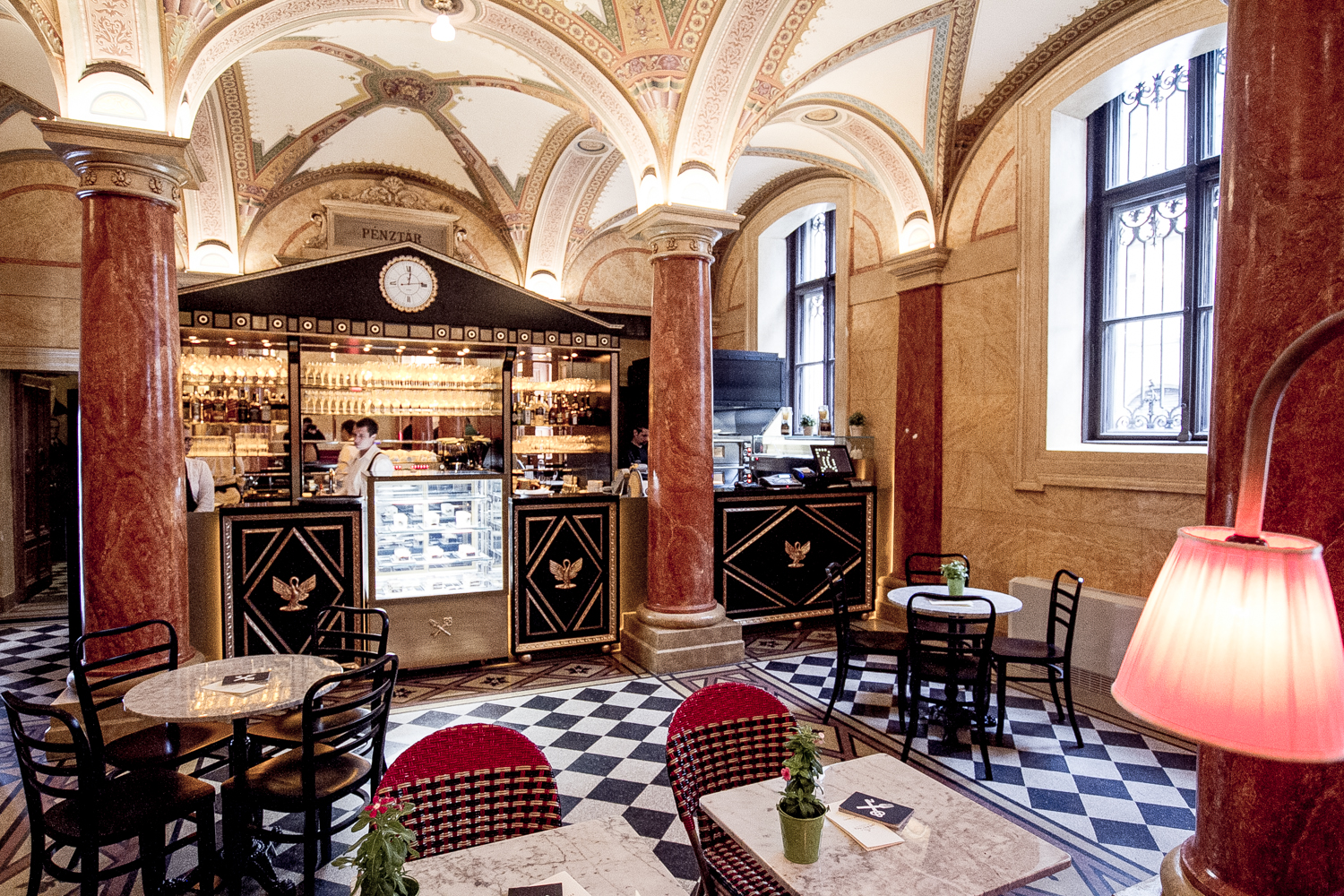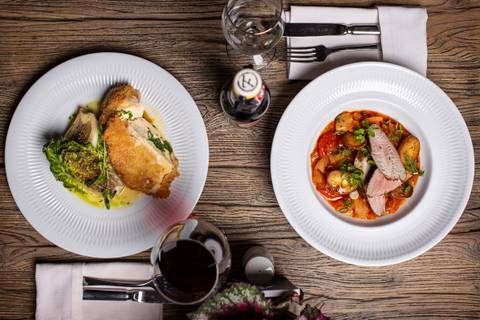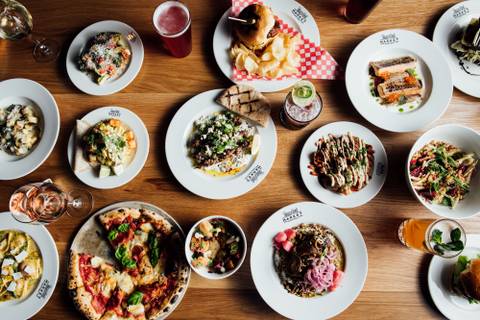Modern gastronomy shares a stage with old-world grace at a new eatery welcoming the public within Budapest’s landmark Hungarian State Opera House, while an upper-story bar for opera viewers is freshly renovated both in the sense of its design and its drink list. The Opera Café is reminiscent of traditional coffeehouses from the Austro-Hungarian Empire, but the show kitchen also offers high-quality Italian pastas and pizzas. As the newest restaurant of Budapest’s prolific Zsidai Group, the selection of dishes was put together by masterful Magyar chef Zsolt Litauszki.
In a three-part article series from last year, we detailed the modern-day scene at Budapest’s world-famous Hungarian State Opera House on Andrássy Avenue, but now a pair of new attractions add even more appeal to this architectural masterpiece of Miklós Ybl. Welcoming the public through its Hajós Street entrance, the Opera Café preserves a previously unused room’s original interior décor, along with fresh furnishings and elements by contemporary Hungarian designer Tibor Somlai that all complement the original 130-year-old ambience.

Matching the scarlet velvet chairs that fill the Opera House theater hall, the café’s individually made seats are covered in red material, standing out amid an overwhelmingly gold and black color scheme used for the new fixtures. The café counter has a fin-de-siècle appearance enhanced by motifs of the two sphinx statues that guard the Opera House façade facing Andrássy Avenue.

The menu is also heavily based on traditions of the Austro-Hungarian Empire’s coffeehouses, so beef stew is a delicious mainstay. The tagliatelle bolognese was outstanding too, and came with a twist as it was prepared with venison. For vegetarians, we recommend the gnocchi with blue cheese or a pizza prepared with varied meat-free toppings.
Meanwhile, the revitalized Sarastro Bar on the first floor is accessible only to ticket-holding opera viewers, as it is intended to be the place where audience members can enjoy drinks and snacks before the show or during intermissions. Representing a different atmosphere thanks to the room’s historic design, the new bar counter and facilities are understatedly elegant so as not to detract from its ornate surroundings, hardly changed since the Opera House opened in 1884.

When designing the new bar, Tibor Somlai felt that the previous placement of service areas on the side of the room diminished the French doors that overlook the central staircase, so the new bar counter is placed in the middle of the grand hall, which also helps draw the eye to the notable artworks on the walls and ceiling. During shows, the staff turns off the chandeliers so that the three oversized paintings can be lit with special projections, resulting in the entire atmosphere being illuminated by brilliant colored light to enhance the artworks, the long bar counter, and the sparkling champagne glasses.

The renovation also included the terrace on the first floor, where planters host carefully manicured trees true to the atmosphere of the Opera House during its heyday in the belle époque – here opera viewers can relax with a drink in hand while enjoying the moving view over Andrássy Avenue. Just to make things even more comfortable, the entire terrace is covered with artificial turf, completing the dramatically beautiful scene for enchanted nights out at the Opera House.




